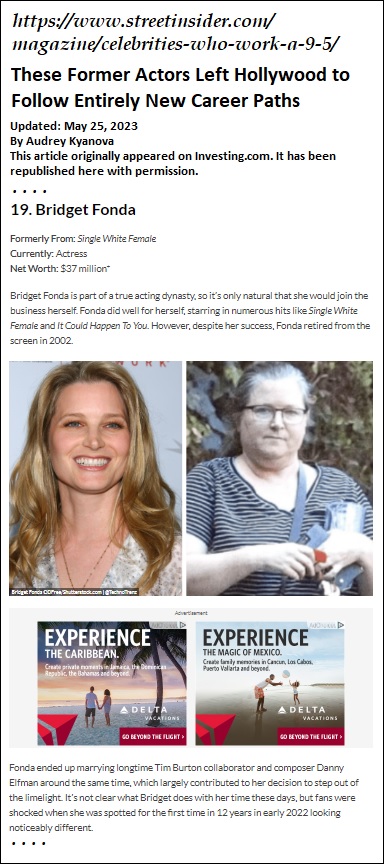In the Labyrinth of Memory
Taking a cue from Danny in the labyrinth of Kubrick's film "The Shining," today I retraced my steps.
My Jan. 6 entry, "Dead Poet in the City of Angels," links to a set of five December 21, 2002, entries. In the last of these, "Irish Lament," is a link to a site appropriate for Maud Gonne's birthday — a discussion of Yeats's "Among School Children."
Those who recall a young woman named Patricia Collinge (Radcliffe '64) might agree that her image is aptly described by Yeats:
Hollow of cheek as though it drank the wind
And took a mess of shadows for its meat
This meditation leads in turn to a Sept. 20, 2002, entry, "Music for Patricias," and a tune familiar to James Joyce, "Finnegan's Wake," the lyrics of which lead back to images in my entries of Dec. 20, 2002, "Last-Minute Shopping," and of Dec. 28, 2002, "Solace from Hell's Kitchen." The latter entry is in memory of George Roy Hill, director of "The Sting," who died Dec. 27, 2002.
The Dec. 28 image from "The Sting" leads us back to more recent events — in particular, to the death of a cinematographer who won an Oscar for picturing Newman and Redford in another film — Conrad L. Hall, who died Saturday, Jan. 4, 2003.
For a 3-minute documentary on Hall's career, click here.
Hall won Oscars for "Butch Cassidy and the Sundance Kid" and "American Beauty," and may win a posthumous Oscar for "Road to Perdition," last year's Irish-American mob saga:
"Tom Hanks plays Angel of Death Michael Sullivan. An orphan 'adopted' by crime boss John Rooney (Paul Newman), Sullivan worships Rooney above his own family. Rooney gave Sullivan a home when he had none. Rooney is the father Sullivan never knew. Too bad Rooney is the
Rock Island
branch of Capone's mob."
In keeping with this Irish connection, here is a set of images.
"Like a chess player, he knows that to win a tournament, it is sometimes wise to offer a draw in a game even when you think you can win it."
— Roger Ebert on Robert Duvall's character in "A Civil Action"
Director Steven Zaillian will take part in a tribute to Conrad L. Hall at the Palm Springs International Film Festival awards ceremony on Jan 11. Hall was the cinematographer for Zaillian's films "A Civil Action" and "Searching for Bobby Fischer."
"A Civil Action" was cast by the Boston firm Collinge/Pickman Casting, named in part for that same Patricia Collinge ("hollow of cheek") mentioned above.
See also "Conrad Hall looks back and forward to a Work in Progress." ("Work in Progress" was for a time the title of Joyce's Finnegans Wake.)
What is the moral of all this remembrance?
An 8-page (paper) journal note I compiled on November 14, 1995 (feast day of St. Lawrence O'Toole, patron saint of Dublin, allegedly born in 1132) supplies an answer in the Catholic tradition that might have satisfied Joyce (to whom 1132 was a rather significant number):
How can you tell there's an Irishman present
at a cockfight?
He enters a duck.
How can you tell a Pole is present?
He bets on the duck.
How can you tell an Italian is present?
The duck wins.

















































































